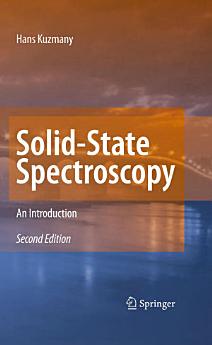Solid-State Spectroscopy: An Introduction, Edition 2
Hans Kuzmany
Oct 2009 · Springer Science & Business Media
Ebook
554
Pages
reportRatings and reviews aren’t verified Learn More
About this ebook
Spectroscopic methods have opened up a new horizon in our knowledge of solid-state materials. Numerous techniques using electromagnetic radiation or charged and neutral particles have been invented and worked out to a high level in order to provide more detailed information on the solids. The text presented here is an updated description of such methods as they were originally presented in the first edition. It covers linear response of solids to electromagnetic radiation in a frequency range extending from megahertz or gigahertz as used in spin resonance spectroscopy, to infrared spectroscopy and various forms of spectroscopy in the visible and near visible spectral range. It extends to spectroscopy in the UV and x-ray spectral range and eventually several spectroscopic methods are addressed in the frequency range of g radiation. Likewise linear response to irradiation with particles such as electrons, positrons, muons, neutrons, and atoms is discussed. Instrumental and technical background is provided as well as application to the analysis of the solid state.
New developments especially addressed in this second edition cover the exciting new field of mesoscopic and nanoscopic solids using light scattering from small particles, single electron (addition) spectroscopy, and quantization in magnetic fields. Likewise, the development and application of synchrotron radiation has encountered a dramatic progress particularly in the field of high resolution and angular resolved photoelectron spectroscopy.
Rate this ebook
Tell us what you think.
Reading information
Smartphones and tablets
Install the Google Play Books app for Android and iPad/iPhone. It syncs automatically with your account and allows you to read online or offline wherever you are.
Laptops and computers
You can listen to audiobooks purchased on Google Play using your computer's web browser.
eReaders and other devices
To read on e-ink devices like Kobo eReaders, you'll need to download a file and transfer it to your device. Follow the detailed Help Center instructions to transfer the files to supported eReaders.






